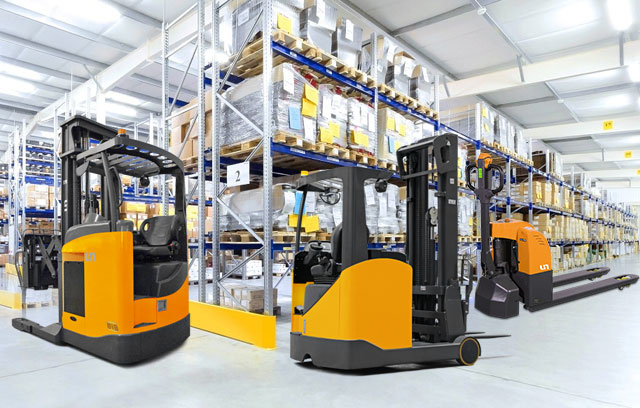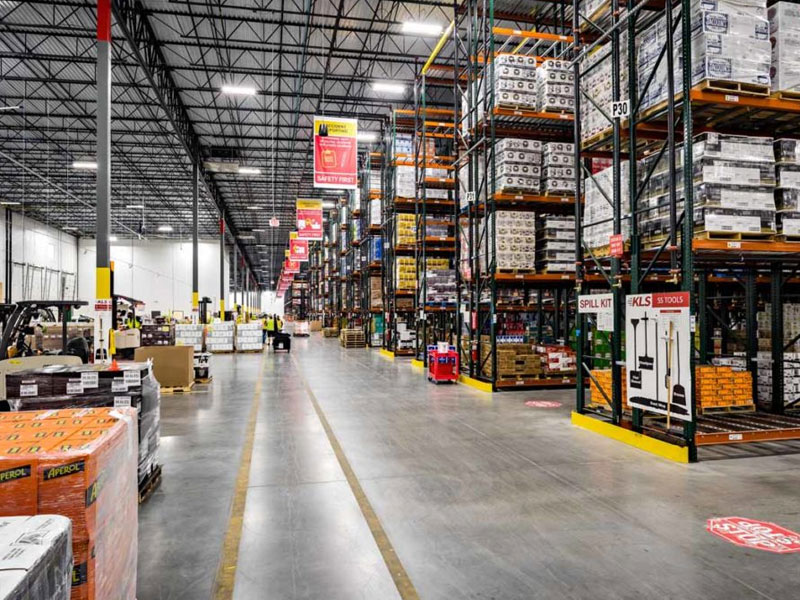As a professional in the material handling and logistics industry, I am well aware of the significance of reach trucks in optimizing warehouse operations. Reach trucks are specialized forklifts designed to efficiently handle and store palletized goods in narrow aisles and high-rack storage systems. These versatile and maneuverable machines play a crucial role in modern warehouses, maximizing storage capacity and enhancing productivity. In this article, we will delve into the world of reach trucks, exploring their features, benefits, working principles, types, and their impact on warehouse efficiency from a professional perspective.
1. Understanding Reach Trucks and Their Features
Reach trucks are electric-powered forklifts with unique features that make them ideal for working in confined spaces. The key features of reach trucks include:
a. Extended Reach: The most distinguishing feature of reach trucks is their ability to extend the forks forward to reach and retrieve pallets stored in narrow aisles and high racks. These trucks can reach heights of up to 30 feet or more, maximizing vertical storage space in warehouses.
b. Narrow Aisle Capability: Reach trucks are designed to navigate through narrow aisles, typically around 8 to 10 feet wide, which is significantly narrower than the aisles accessible to traditional counterbalance forklifts. The narrow aisle capability optimizes the use of warehouse space, allowing for more aisles and higher rack configurations.
c. Articulated Steering: Reach trucks often have articulated or "swinging" steering wheels that allow them to turn within their own footprint, enabling precise maneuvering in tight spaces. This feature enhances operator control and safety.
2. Benefits of Using Reach Trucks in Warehouses
The adoption of reach trucks in warehouse operations offers several significant benefits:
a. Increased Storage Capacity: Reach trucks' ability to operate in narrow aisles and reach greater heights allows warehouses to optimize vertical space utilization. This results in a substantial increase in storage capacity, enabling businesses to stock more products and efficiently manage inventory.
b. Improved Productivity: Reach trucks' agility and maneuverability enable faster and more precise handling of goods, reducing loading and unloading times. The ability to reach high racks without the need for additional equipment streamlines the handling process and enhances overall productivity.
c. Cost-Effective Space Utilization: By maximizing vertical storage space, reach trucks eliminate the need for wider aisles, which would otherwise require more floor space. This efficient use of space can lead to cost savings, as businesses can operate in smaller facilities while maintaining the same storage capacity.
3. Working Principles of Reach Trucks
The working principles of reach trucks are based on hydraulic and electronic systems. The key components include:
a. Hydraulic System: The hydraulic system powers the lifting mechanism of the reach truck. When the operator activates the lift control, hydraulic cylinders extend, raising the fork carriage and the forks to the desired height.
b. Electronic Controls: Reach trucks use electronic controls to manage various functions, including lifting, steering, and auxiliary features. Advanced reach trucks may also feature automated controls and integration with warehouse management systems for efficient order picking and inventory management.
c. Telescopic Mast: The telescopic mast is a vital component of reach trucks, allowing the forks to extend forward and reach pallets in narrow aisles. The mast is operated hydraulically and can be tilted backward or forward to position the load accurately.
Reach trucks are indispensable assets in modern warehouses, revolutionizing the way goods are handled, stored, and managed. Their ability to navigate narrow aisles and reach great heights optimizes storage capacity, enhances productivity, and reduces operational costs. As a professional in the material handling and logistics industry, I firmly believe that the adoption of reach trucks is a pivotal step toward achieving greater warehouse efficiency and competitiveness. Proper operator training, routine maintenance, and adherence to safety protocols are crucial to ensuring the safe and efficient use of reach trucks in warehouse operations. As technology continues to advance, reach trucks will likely see further improvements and integration with smart systems, further elevating their role in shaping the future of material handling and logistics.
Reach trucks are indispensable assets in modern warehouses, revolutionizing the way goods are handled, stored, and managed. Their ability to navigate narrow aisles and reach great heights optimizes storage capacity, enhances productivity, and reduces operational costs. As a professional in the material handling and logistics industry, I firmly believe that the adoption of reach trucks is a pivotal step toward achieving greater warehouse efficiency and competitiveness. Proper operator training, routine maintenance, and adherence to safety protocols are crucial to ensuring the safe and efficient use of reach trucks in warehouse operations. As technology continues to advance, reach trucks will likely see further improvements and integration with smart systems, further elevating their role in shaping the future of material handling and logistics.
Reach Truck(Sit in)
UN Forklift is one of earliest factories to produce reach truck, double deep reach truck and VNA in China.











 中文简体
中文简体 عربى
عربى Español
Español














